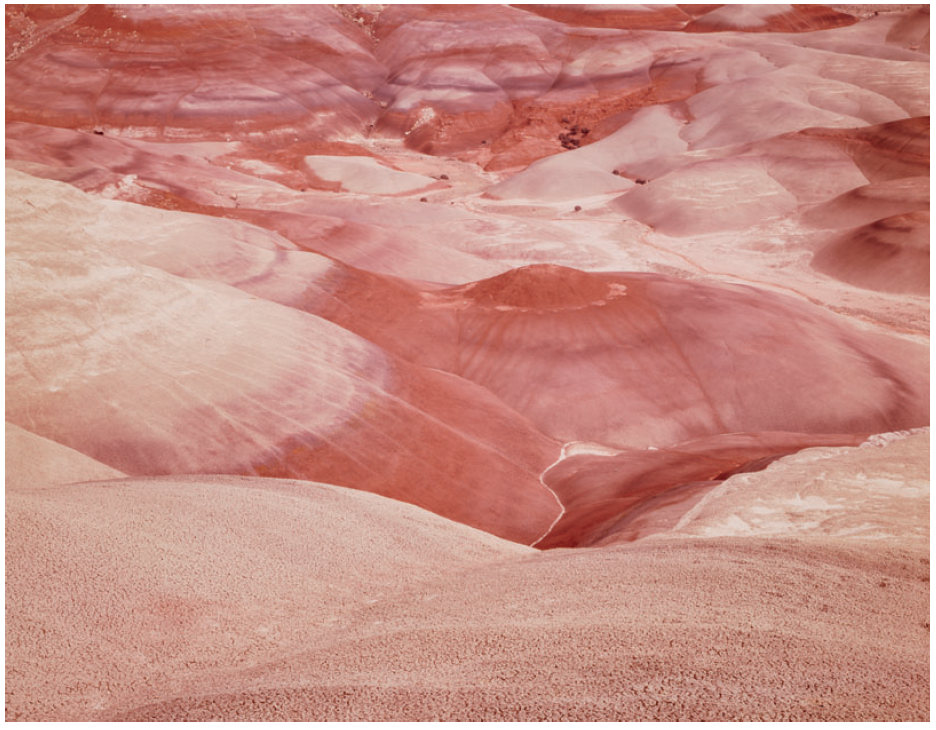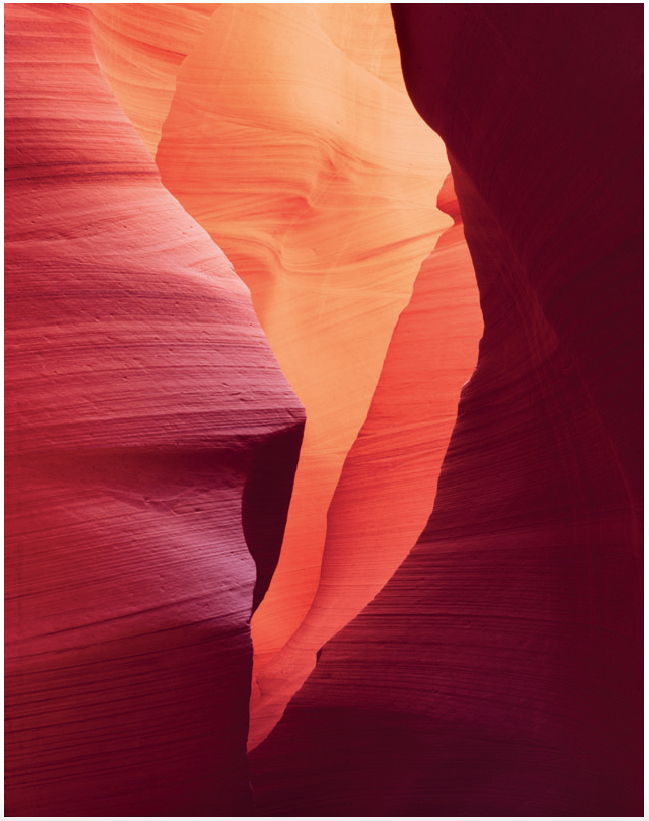The following is an excerpt from Bruce Barnbaum’s book Plateaus and Canyons.

BENTONITE HILLS, FREMONT RIVER – Here is a case, and a place, where the landscape seems to transcend that of just a landscape to become an abstract painting on a grand scale. These hills with their swirling shapes and crazy colors offer us a scene that only the most imaginative of artists could conceive. Bentonite is a heavy clay, so dense and devoid of nutrients that nothing grows on it. In different regions it exhibits different colors, from the reds and purples of the Fremont River area to the blacks and gunstock grays of the Caineville Buttes to greens, blues, purples, and even other colors, spanning the full spectrum. During the day, depending on the type of lighting, and even the direction of the sun, bentonite can take on a wide range of hues, confounding your initial idea of what color you’re viewing. It changes. It’s never the same, but it’s always fascinating. Earlier that day I had been exploring the landscape in the northern portion of Capitol Reef National Park. After leaving the park, I encountered this extraordinary scene spreading as far as the eye could see. I climbed out of my truck to make the photograph. Bentonite is mined to be used as cat litter and to be spread where you don’t want plants to grow. It’s very effective for both purposes. This unprotected area could become a mining site one day.

COYOTE BUTTES – It is hard to imagine any portion of this planet taking on thewildly lyrical contours of Coyote Buttes. It is equally hard to imagine any natural area possessing the depth of color that is found in this region . . . even during the midday hours, and even under the most intense sunlight. But you don’t have to imagine it; you can experience it directly if you simply go there. It’s a tiring walk with several ascents and descents, some of them quite steep, and some in soft sand to make it even more difficult. The rewards, however, more than justify all the heavy breathing, profuse sweating, and aching legs endured in getting there. When I made this image there was a layer of clouds blocking the sun. It evened out the light, softening the harshness of intense sunlight alternating with deep, dark shadows. Everything was revealed, from the open contours in the foreground and mid-distances to the striations of the far-distant forms and even to the tiny bit of clouds and sky beyond. Coyote Buttes is an incomparable tone poem of shape and color, possessing wide open areas, small alcoves, and tiny corridors leading from one area to the next, each with its own character.

ANTELOPE CANYON REFLECTED LIGHT – The soft lines and gentle forms—quite unusual for Antelope Canyon—are like a meticulously carved sculpture. It is workmanship of the highest order, and the two carvers are water and wind. But it’s unimaginable that any human could have done a better job, either in design or craftsmanship.
There is an unmistakable warmth to it all, and a subtlety that astounds simply because it is so subtle. Follow the mid-distance line in the lower center all the way to its bottom, where the nearer, dark walls on either side close it off. Notice the almost nonexistent ripple in it just above its disappearance into the near wall on the left. It’s easy to miss at first glance, but it’s there. And to me, it’s one of the most wonderfully subtle accents I’ve ever seen. Then notice the far more obvious ripple at the top of that same line, just before it disappears into the dark wall on the right. I placed my camera extremely carefully to bring both of those ripples into the image, and did nothing further to enhance or subdue them beyond that. What was there naturally could not be improved upon. My intent was to reveal them. Nothing more.
The above pictures and text were excerpted from Bruce Barnbaum’s Plateaus and Canyons.
